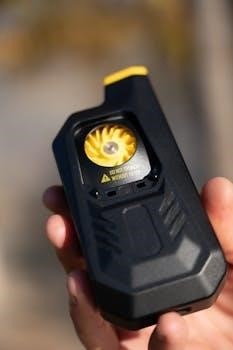
oster toaster oven instruction manual
Oster toaster oven manuals provide essential guidance for safe and effective appliance use. These manuals include crucial details on operation, maintenance, and safety precautions for various models. Users should consult these documents for optimal performance and longevity of their Oster toaster ovens.
Overview of Oster Toaster Oven Models
Oster offers a diverse range of toaster oven models, catering to various needs and preferences. These include compact 4-slice ovens, ideal for smaller kitchens, and larger 6-slice models suitable for families. Some models feature convection technology for faster and more even cooking, while others boast digital controls for precise settings. The French door design is another popular option, providing easy access to the oven’s interior. Furthermore, Oster provides extra-large digital toaster ovens, designed for those who need additional cooking capacity. Each model comes with its specific instruction manual, which details the unique features and functions. Understanding the nuances of your specific Oster model is critical for optimal performance and safe operation. Manuals for each model are available online.

Safety Precautions in Oster Manuals
Oster manuals emphasize safety, highlighting precautions like avoiding hot surfaces and proper cord handling. Supervision of children is also stressed. Reading all instructions before use is vital for safety.
General Safety Warnings
Oster toaster oven manuals contain critical general safety warnings that users must adhere to for safe operation. These warnings often include the necessity of reading all instructions before initial use, ensuring a complete understanding of the appliance. Users are typically cautioned against touching hot surfaces during and after operation, emphasizing the potential for burns. It’s also commonly advised to avoid using accessory attachments not specifically recommended by Oster, as they may pose a safety risk. Unplugging the toaster oven when not in use and before cleaning is a standard precaution. Additionally, the manuals often explicitly state that the appliance should not be immersed in water, underlining the risk of electrical shock and damage. The importance of careful supervision of children when the oven is in use is also a frequent warning.
Handling Hot Surfaces and Cords
Oster toaster oven manuals emphasize the importance of careful handling of hot surfaces and cords. Users are warned that the exterior surfaces of the oven, including the door and racks, become extremely hot during operation and remain hot for some time afterward. It is crucial to avoid touching these surfaces directly; instead, oven mitts or heat-resistant gloves should be used. The manuals also highlight the significance of preventing the power cord from coming into contact with hot surfaces. Additionally, the manuals advise against letting the cord hang over the edge of a countertop, where it could be pulled or tripped over, leading to accidents. The cord should also be kept away from any water source to prevent electrical hazards. Proper cord storage when the appliance is not in use is also advised.
Supervision of Children
Oster toaster oven manuals consistently stress the necessity of supervising children when the appliance is in use. Children should never be left unattended near a working toaster oven, given the potential dangers of hot surfaces and moving parts. The manuals advise that children should be explicitly instructed on the risks associated with the appliance and trained to avoid touching any hot surfaces. It is further recommended to store the toaster oven out of reach of children when not in use to prevent any accidental injuries. Parents or guardians should ensure that children do not attempt to operate the toaster oven without proper adult supervision and instruction. The potential for burns and other accidents is a key safety consideration, making adult oversight paramount when children are present.

Initial Use and Preparation
Before the first use, Oster manuals advise users to clean the toaster oven and its components. Understanding the parts is crucial for proper functionality, ensuring safe operation and optimal results.
Preparing the Toaster Oven for First Use
Before operating your new Oster toaster oven, it’s crucial to prepare it properly. According to the manuals, start by carefully unpacking all components and removing any packaging materials. Then, wipe down the interior and exterior surfaces with a damp cloth, using mild soapy water if necessary. It is very important to ensure that the appliance is unplugged and completely cooled before cleaning. Avoid immersing the unit in water. After cleaning, allow the oven to air dry completely before plugging it in and using it for the first time. Review the specific instructions for your model to ensure optimal performance and safety. This initial cleaning will help remove any manufacturing residue.
Understanding Oven Components
Familiarizing yourself with the components of your Oster toaster oven is essential for effective use. Typically, an Oster toaster oven includes a removable wire rack, which may be reversible, and a crumb tray for easy cleaning. You’ll also find a function selector knob to choose different cooking modes such as bake, broil, or toast. There’s usually a temperature control knob to set the desired cooking temperature, and a timer knob, often with a bell signal, to manage cooking duration. A power light indicates when the oven is operating, and some models feature cool-touch side handles and a viewing window. Finally, some models have continuous clean interior walls. Understanding these parts will help users operate the appliance correctly.

Operating Instructions
Operating your Oster toaster oven involves using the function selector, temperature, and timer knobs. It’s important to understand each feature for optimal cooking results, including convection bake if available.
Using Function Selector Knob
The function selector knob on your Oster toaster oven is crucial for choosing the correct cooking mode. Typically, it allows you to select between settings like bake, broil, toast, and sometimes convection bake. Rotating the knob aligns the desired setting with a marker, activating that specific cooking function. For example, turning it to ‘Bake’ will use both top and bottom heating elements, while ‘Broil’ will activate the top element only. Proper use of the selector knob is fundamental for achieving your preferred cooking results. Always ensure that the knob is firmly placed in the desired setting, and refer to your specific model manual for exact function options.
Setting Temperature and Timer
Setting the correct temperature and timer is essential for successful cooking with your Oster toaster oven. The temperature control knob allows you to select the desired cooking heat, typically ranging from low to high temperatures, often with specific degree markings. Similarly, the timer knob is used to set the duration of the cooking cycle. Turning the timer knob to the required time will activate the oven and initiate the cooking process. Some models also feature a bell signal that will chime when the set time has elapsed. Always consult your specific model’s manual for precise temperature and timer settings to avoid over or undercooking your food.
Understanding Convection Bake Feature
The convection bake feature in your Oster toaster oven utilizes a fan to circulate hot air, ensuring even cooking and browning of food. This feature is particularly beneficial for baking items like cookies, cakes, and roasts, as it helps eliminate hot spots and promotes consistent results. When using the convection setting, you may need to adjust cooking times and temperatures slightly compared to traditional baking. Check your manual for specific guidelines on convection baking, including recommended adjustments. The convection bake button typically activates the fan, and it is essential to understand the difference between convection and regular bake settings for optimal cooking.

Cleaning and Maintenance
Regular cleaning is crucial for your Oster toaster oven’s performance and longevity. Always unplug and allow it to cool before cleaning. Wipe with a damp cloth and use mild soap.
Cleaning Procedures
Before starting any cleaning, ensure your Oster toaster oven is unplugged and completely cooled down. Never immerse the appliance in water. For the exterior, use a soft, damp cloth to wipe down surfaces, avoiding harsh chemicals or abrasive cleaners. The interior walls, often designed for continuous cleaning, can be wiped with a damp cloth as well. For stubborn stains or baked-on food, use a mild, soapy water solution, ensuring to rinse thoroughly with a clean, damp cloth. Pay special attention to the removable crumb tray, which should be emptied and cleaned regularly to prevent buildup and potential fire hazards. Remember to dry all parts completely before reassembling and using the oven again. Regular cleaning helps in maintaining the oven’s efficiency and prevents smoke and unpleasant odors.
Proper Handling of Removable Parts
Oster toaster ovens often include removable parts like wire racks and crumb trays, which require careful handling. When removing these components, ensure the oven is cool to prevent burns. Always support the racks firmly when sliding them out to avoid bending or damage. The crumb tray should be emptied regularly to prevent buildup, which can lead to smoke or fire hazards. When cleaning, wash these parts with mild soapy water, rinsing thoroughly and ensuring they are completely dry before reinserting them into the oven. Avoid using abrasive cleaners or metal utensils, as these can scratch or damage the non-stick coating of the parts. Always ensure that all removable parts are properly placed before operating the oven to ensure even cooking and safe use. Improper handling may lead to damage or inefficient function.
Troubleshooting and Support
Oster toaster oven manuals offer troubleshooting tips for common issues. They also provide guidance on finding replacement parts and accessories, ensuring continued appliance functionality and user satisfaction.
Common Issues and Solutions
Oster toaster oven manuals address several common issues users might encounter. These include problems such as the oven not heating, uneven cooking, or the timer not working correctly. For a non-heating oven, the manual suggests checking the power cord and outlet first. Uneven cooking can often be resolved by ensuring proper placement of the food on the rack and not overloading the oven. Timer malfunctions may require resetting the oven or contacting customer support. The manuals often provide step-by-step guidance to resolve these issues, ensuring users can quickly get their appliance back in working order. Additionally, it advises against any unauthorized repairs that can void the warranty. If troubleshooting steps fail, contacting Oster customer service is recommended.
Finding Replacement Parts and Accessories
Oster toaster oven manuals typically include information on how to find replacement parts and accessories. Users are often directed to the official Oster website or authorized service centers for genuine components. These may include replacement racks, baking pans, crumb trays, and knobs. The manuals often emphasize the importance of using only genuine Oster parts to maintain the appliance’s safety and performance. Links or contact details are usually provided to facilitate easy access to these resources. Additionally, the manuals might caution against using third-party or non-compatible parts, which can potentially damage the oven or void the warranty. It is recommended to check the model number of your oven before ordering to ensure compatibility. Some manuals also provide specific part numbers for convenience.


Leave a Reply
You must be logged in to post a comment.